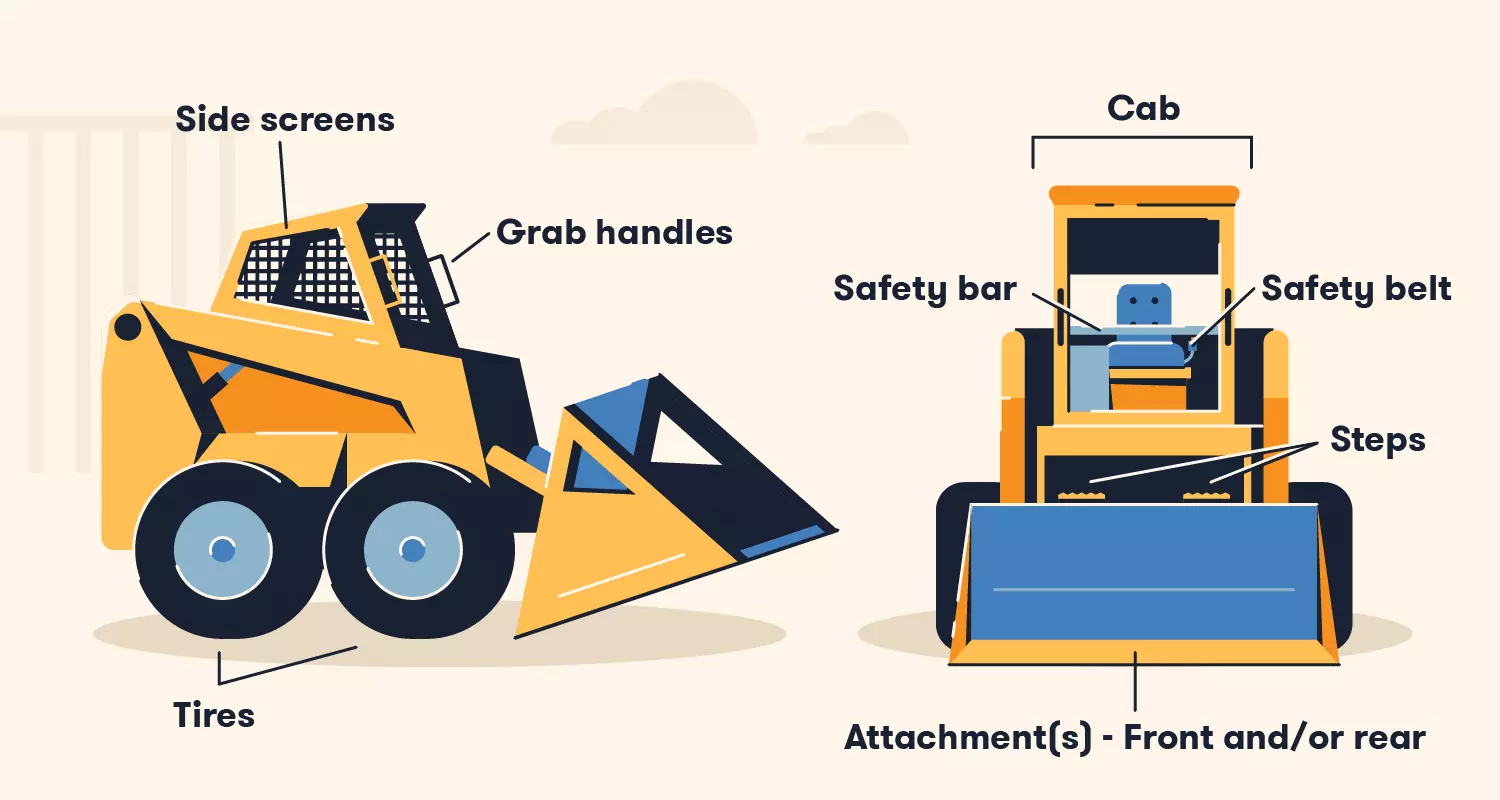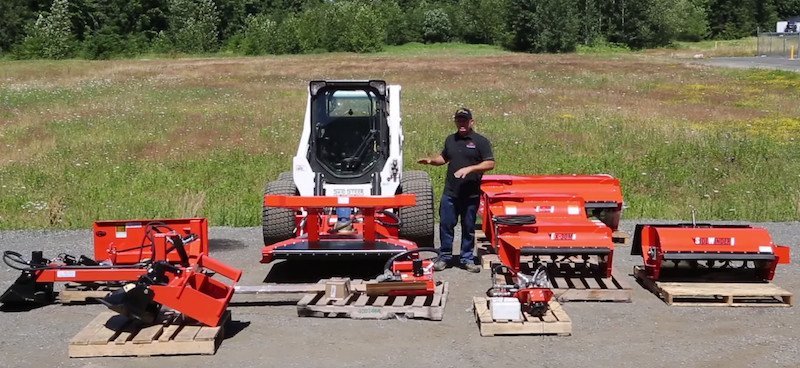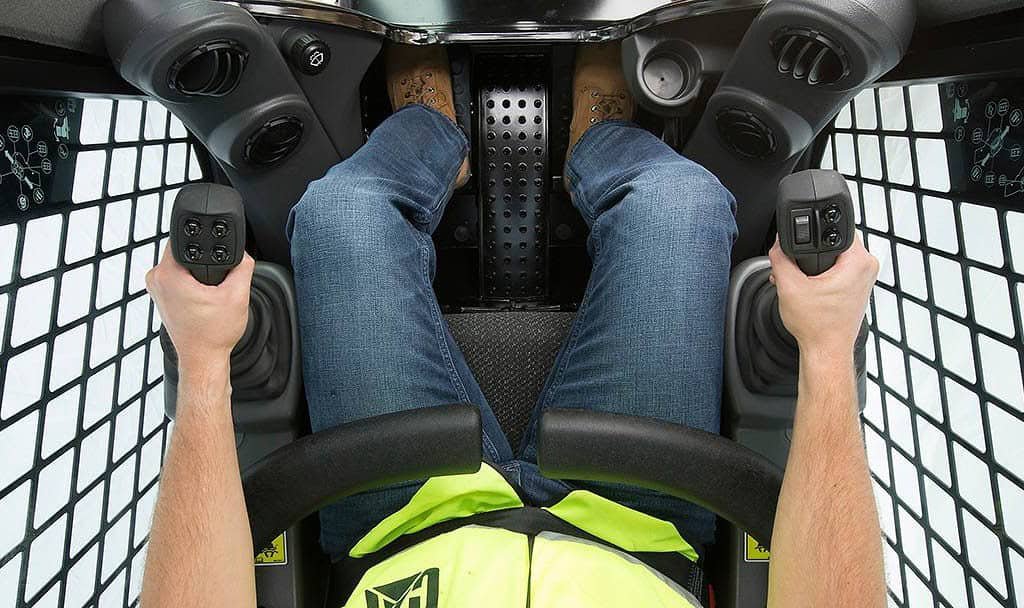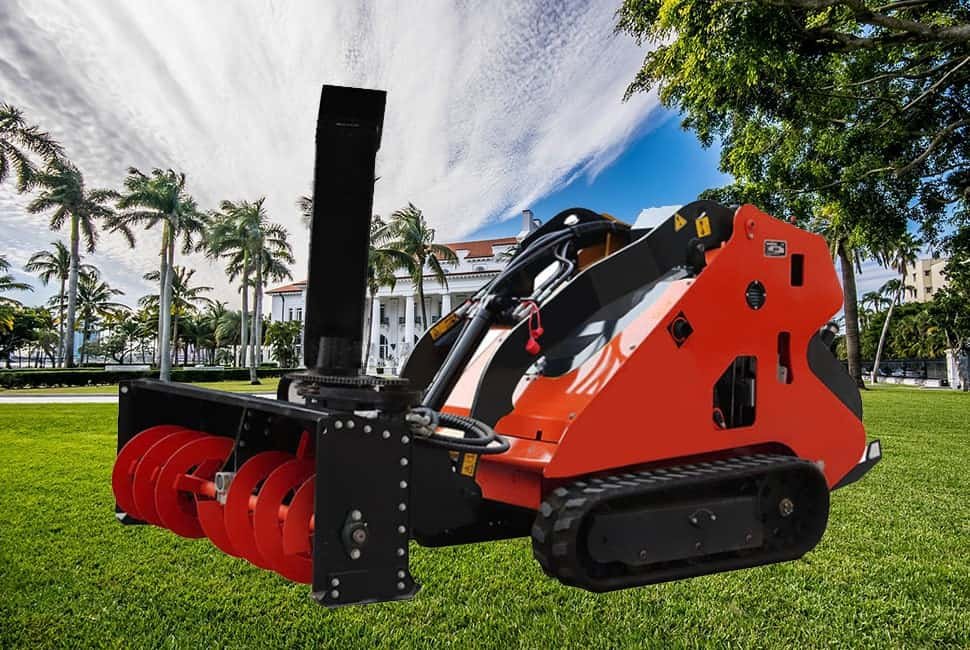Skid steer loaders are versatile machines, widely used in construction, agriculture, and landscaping. Understanding how to operate a skid steer loader efficiently is key to enhancing productivity and ensuring safety.
To operate a skid steer loader, start by familiarizing yourself with the controls, starting procedure, and safety measures. Learning how to properly handle the machine will improve your work efficiency and reduce potential risks.
Now, let’s delve deeper into the essential steps to operate a skid steer loader safely and effectively.
Skid Steer Loader Basics: What You Need to Know
Before we delve into the intricacies of operating a skid steer loader, let’s first grasp the fundamental components and their roles within this versatile machine.
Skid steer loaders are known for their compact and nimble design, which is perfect for navigating through confined spaces with ease. These multifaceted machines are equipped with either tracks or wheels, depending on the model, and are primarily used for a range of tasks including lifting, digging, and transporting materials across various terrains.

The skid steer loader comes in a variety of models, each tailored to meet the demands of specific tasks. Some models are fitted with tracks, which provide superior stability and traction on uneven or rough terrains, while others boast wheels that enable swifter movement on flat and smooth surfaces. Gaining a thorough understanding of your machine’s specifications is crucial for selecting the most suitable model for your particular job requirements. This knowledge will not only enhance your operational efficiency but also ensure that you can tackle any challenge that comes your way with confidence and precision.
How to Start a Skid Steer
Embarking on a project with a skid steer loader begins with a successful startup, which is pivotal for ensuring a seamless operation. Let’s walk through the process step by step.
First and foremost, before you embark on your task, it’s essential to ensure that the gear shift is in the neutral position and that the parking brake is securely engaged. This preliminary step is crucial for safety and prevents any unexpected movement of the machine.
Next, you’ll want to turn the key or press the start button to ignite the engine. Patience is key at this stage; allow the engine to warm up properly before you begin your work. This brief period of idling not only prepares the engine for operation but also helps in prolonging its lifespan.
However, before you hit the start button, it’s imperative to conduct a swift yet thorough pre-operational check of your skid steer loader. Begin by inspecting the oil level to ensure it’s within the recommended range, as this lubricant is vital for the smooth running of the engine. Similarly, verify the fuel level to avoid any interruptions in your work due to a drained tank.
However, before you hit the start button, it’s imperative to conduct a swift yet thorough pre-operational check of your skid steer loader. Begin by inspecting the oil level to ensure it’s within the recommended range, as this lubricant is vital for the smooth running of the engine. Similarly, verify the fuel level to avoid any interruptions in your work due to a drained tank.
Lastly, always ensure that no tools, materials, or debris are left in the vicinity of the moving parts of the skid steer loader. This simple yet vital check helps prevent accidents and protects both the machine and its operator from harm.
By performing these checks, you’re not only preventing potential breakdowns but also significantly enhancing the longevity and efficiency of your skid steer loader. Safe, diligent preparation is the cornerstone of a productive and incident-free workday with your skid steer loader.
Skid Steer Controls: Mastering the Basics
At first glance, the controls of a skid steer loader might appear quite daunting, but fear not—like any new skill, with practice, you’ll soon find yourself navigating them with ease and confidence.
Skid steer loaders are equipped with a pair of joysticks that serve as the primary means of control, each with a distinct yet complementary function. These joysticks are the keys to achieving smooth and precise operation, allowing you to expertly command the loader’s movements.
The right joystick is responsible for governing the speed and direction of the left side of the machine, while its counterpart on the left does the same for the right side. This symmetrical control system might seem counterintuitive at first, but it’s designed to provide intuitive and responsive steering. When you push both joysticks forward, the loader advances smoothly; conversely, pulling them back initiates a controlled reverse.
Mastering these controls is not just about moving the loader; it’s about doing so with finesse. In tight quarters or complex work environments, the ability to maneuver the loader with precision can make all the difference. It allows for efficient work flow, safe navigation around obstacles, and the capacity to perform tasks that require delicate handling.
As you become more familiar with the joysticks, you’ll discover that they offer a high degree of control, enabling you to make subtle adjustments to the loader’s movements. This level of control is particularly valuable when working in confined spaces where every inch counts. With time and practice, you’ll be able to execute complex maneuvers with ease, turning your skid steer loader into an extension of your own capabilities on the job site.
How to Run a Skid Loader
Becoming adept with the controls is just the beginning; mastering the art of operating a skid loader efficiently is where true productivity lies. Once you’ve grown comfortable with the joysticks and throttle, you’re ready to take your skid loader skills to the next level.
To effectively run a skid loader, start by engaging the machine’s throttle, which is your gateway to controlling the loader’s power. Use the joysticks to navigate the loader with precision, ensuring that every movement is deliberate and controlled. Your posture and visibility are paramount for safe operation, so make sure you’re sitting upright and have a clear, unobstructed view of your surroundings.
Your feet should be firmly planted on the pedals, providing a solid base for you to operate from. Maintaining balance in your seat is crucial for maximum control over the machine. If necessary, adjust your seat position to strike a balance between comfort and the ability to reach the controls effectively. This adjustment not only enhances your comfort during long hours of operation but also ensures that you can react swiftly and accurately to any changes in the work environment.
Stay mindful of the terrain beneath you—it plays a significant role in how you should operate the skid loader. Whether you’re navigating soft, muddy ground or hard, compact surfaces, be prepared to adjust the loader’s speed and stability to match the conditions. This adaptability is key to maintaining both efficiency and safety on the job.
By paying close attention to your posture, control, and the environment, you’ll not only increase your productivity but also ensure that you’re working in the safest and most efficient manner possible. With practice, these elements will come together seamlessly, turning you into a skilled operator who can handle any task that comes your way.
How to Use Skid Steer Attachments
Skid steer loaders are incredibly versatile because they can be equipped with various attachments. Using the right attachments for the job can significantly enhance your machine’s performance.
Common attachments include buckets, forks, snowplows, and grapples. Each attachment has its own unique control requirements and installation procedure.

To attach a bucket or other tool to your skid steer, align the attachment with the loader’s mounting plate and activate the quick coupler system. Once securely attached, familiarize yourself with how each attachment changes the machine’s handling and performance. For instance, using a bucket requires different control movements compared to using pallet forks. Practice with each attachment to master its specific handling.
When using a snowplow or sweeper, it’s important to understand the tool’s angle and pressure adjustments to ensure efficient operation. Always refer to your skid steer’s manual for proper attachment usage, and make sure to inspect each attachment before use to avoid any malfunction during operation.
Safety Measures for Operating a Skid Steer Loader
Safety is a priority when operating heavy machinery like skid steer loaders. Let’s explore the key safety guidelines.
Always wear proper protective gear such as a helmet, gloves, and steel-toe boots. Make sure to inspect the area for any obstacles, and never operate the loader near pedestrians or other vehicles.
Before starting your work, conduct a safety inspection of the skid steer loader. Check the hydraulic systems, brakes, and controls to ensure everything is functioning properly. Keep a safe distance from others while operating, and be mindful of the machine’s range of motion. If working on slopes or uneven ground, use extra caution to prevent tipping.
How to Improve Efficiency While Operating a Skid Steer Loader
Operating a skid steer loader efficiently not only improves job productivity but also ensures that the machine lasts longer.
Familiarize yourself with your machine’s capabilities and use the right attachments for each job. Keeping the loader’s speed steady and avoiding unnecessary movements will also enhance efficiency.
When using a skid steer loader for tasks like digging or loading, try to maintain a consistent speed for each operation. Sudden starts and stops waste fuel and time. Additionally, regular maintenance, such as lubricating the parts and cleaning the filters, will help the machine run smoothly for years.
Résumé:
Mastering the operation of a chargeuse compacte involves understanding the controls, practicing safety measures, using the right attachments, and optimizing your efficiency. By following these steps, you can ensure smooth, safe, and effective operation.


